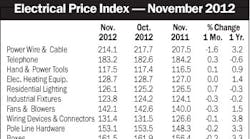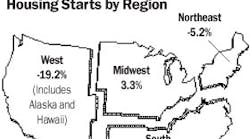Latest from Mag
Product liability surfaced as a big concern for distributors in the research for the recent series of articles on private labeling in the research for the recent series of articles on private labeling in Electrical Wholesaling. To address these concerns, EW is running a brief legal analysis of the issue in its July issue, and this report offers an exclusive preview of this article.
Electrical distributors considering private labeling have three categories of legal stakeholders to consider: the manufacturer of its private-labeled products; purchasers and end users of the products; and the general public and government. A prudent electrical distributor will take the legal actions necessary to reduce or eliminate its legal risk to each stakeholder category. These legal risks include:
Product liability for injury or property damage allegedly caused by a defective product.
Liability for patent or trademark infringement. Liability for counterfeiting.
Product liability is a major business concern. According to insurance consulting firm Tillinghast in a recent Fortune article, 49,743 product liability lawsuits were filed in 2006 and cost businesses (and their insurance companies) $261 billion. The issue is of great concern in the electrical industry. Surveys conducted by Allen Ray Associates, Kennedale, Texas, and Channel Marketing Group, Raleigh, N.C., consistently show the risk of product liability lawsuits is one of the main concerns of distributors contemplating private labeling.
Products liability is a legal action based on an allegedly defective product. Under current law in virtually every state, an injured party can bring a lawsuit against any corporation in the "chain of distribution" of the product, from the original manufacturer to the retailer and every party in between. It doesn’t matter that the distributor may have obtained a product in a sealed box and sold it in a sealed box; the distributor is potentially liable to the injured party (the "plaintiff") based on the legal doctrines of product liability.
Over the years, the doctrine has been modified and altered by the courts and legislatures. The key element in a plaintiff’s claims against the distributor, manufacturer, retailer, etc., is the concept of "product identification." The plaintiff must be able to allege that the product that caused harm was manufactured, distributed and sold by the defendants. Keep in mind that the standard for making an allegation in a lawsuit is very low. If the slightest possibility exists that the distributor defendant may have distributed the particular product, that’s usually enough to allow for the filing of a lawsuit. If a distributor is identified based on sales receipts from the distributor to the end-user (contractor or MRO account/installer), it may not matter that the customer was also buying similar or even identical product from other, unnamed distributors.
The concept behind this broad-based liability is that the plaintiff should not have to sort out who was at fault in manufacturing, designing, selling or (potentially) altering the product. That should be left to the defendants to determine amongst themselves through agreement or through a legal procedure to shift the costs to the appropriate party. In 90 percent of the cases, the plaintiff’s main claim is that the design of the product itself is defective and, as a result, the manufacturer (who designed the product) should bear the burden of proving that the product design was not defective.
When most manufacturing was done in the United States, the plaintiff would typically sue every participant in the chain of distribution and then the U.S. manufacturer would assume the defense for all downstream parties. This arrangement might take place after the suit was filed by agreement of the defendants or it might take place before any claim was made if the manufacturer agreed to include the distributor as an "Additional Insured" on the manufacturer’s product liability insurance policy.
When a manufacturer is offshore or bankrupt, however, things are complicated. If an offshore manufacturer has no U.S. operations, it may not be subject to suit in the United States. Manufacturers based in China or India, in particular, are notoriously hard to serve with suit papers. The same result applies to bankrupt U.S. manufacturers. A bankrupt company is all but invulnerable to lawsuits.
If the offshore manufacturer or bankrupt U.S. manufacturer cannot be served with suit papers, then the plaintiff brings the claims against the viable U.S. parties, typically the distributor. Distributors have a hard time defending against defective design or manufacture claims when design and manufacturing were done by the offshore manufacturer. Things become more complicated for a private labeler (read distributor). The plaintiffs often argue that the private labeler is an "apparent manufacturer" and therefore responsible not only for the product design and manufacture but also the warnings and package instructions.
When the plaintiff makes this type of claim, then the actual manufacturer, whether based in the U.S. or offshore, may refuse to take over the defense of the private-label distributor. The manufacturer will argue that the plaintiff is making a claim directly at the private label itself, not just the product design. This article highlights the legal issues related to private labeling so that distributors can make a more thorough decision prior to private labeling. It’s not intended to give specific legal advice, and instead is intended to highlight general legal issues that may affect the decision to private label.

